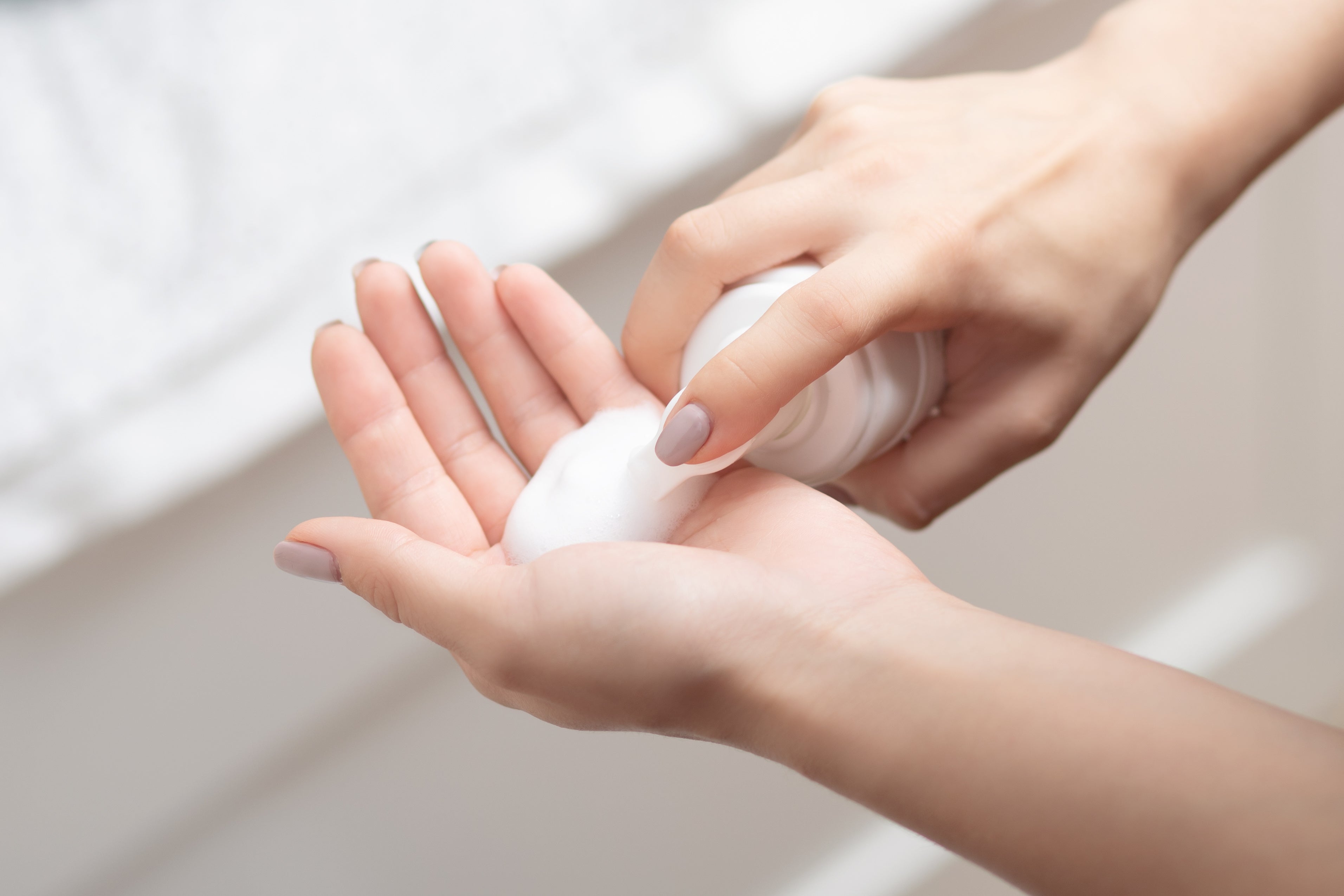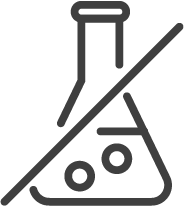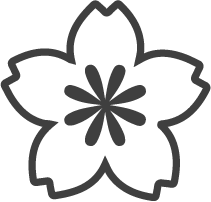Whether it's ten steps or three, you probably already have a skincare routine. Maybe you've carefully formulated it over the years, or you've only just started to find which products work best for you. Whichever it is, do we really know what we're putting on our skin, and the purpose of each step in our routines?
Welcome to The Anatomy of Skincare, where we break down each layer of a typical skincare routine, so that you can craft the perfect routine for you, thoughtfully and with intention.
The Basics of Cleansing
In the context of skincare, a cleanser is a product used to wash the face and remove makeup, and/or any other residues or pollutants from the skin. It is often the first step in a skincare routine, and as the first step, it's crucial to ensure that it is done properly.
What exactly are we cleansing from our skin?
When we cleanse our skin, we are not just removing makeup or products. We are removing microbes, dirt, sebum, oils, sweat, and dead skin cells. This ensures that our pores are clear and that there are no irritants left on the skin, preventing issues such as acne. Clearing the pores and removing buildup on the skin also facilitates the absorption of skincare products.
What is sebum?
Sebum comes from sebaceous glands, which are small glands alongside hair follicles that push the sebum up to the surface of the skin. Simply put, the role of sebum is to form a protective layer, which provides lubrication, antimicrobial and antibacterial benefits, and antioxidant delivery [1].
If your skin feels dry, one of the possible factors is a lack of sebum. This could be due to excess cleansing, which strips the skin of sebum and natural oils, or harsh soaps that may dissolve the protective layer of sebum [2]. Sebum production can also be affected by various factors, such as ones age, hormone levels, overall health, and environment [1, 3].
On the other hand, excess sebum can lead to clogged pores and growth of bacteria on the skin. This growth of bacteria elicits immune responses from our body, causing the growth of acne. Clogged pores also contribute to the formation of comedones, commonly known as whiteheads or blackheads [1].
The First Step to Radiant Skin
Cleansing also helps the skin maintain a proper level of hydration by boosting water retention. Skin that does not retain sufficient amounts of water will become dehydrated, leading to rough skin texture, dullness, and wrinkles [4]. Hydrated skin feels plump, smooth, and looks radiant. This is why cleansing is so important — along with keeping your body hydrated overall!
Finding Your Perfect Cleanser
There are so many types of cleansers out there; how does one choose which product to buy? Let's break down the different types of cleansers. We'll also provide product recommendations so you can find the perfect cleanser according to your needs!
Oil Cleansers
Also known as cleansing oils, they are gentle cleansers that help remove makeup, sebum, and any other pore-clogging debris. They are often used as the first step in double cleansing, and are suitable for all skin types [5].

We recommend: Carré Cosmetics Shiso/Perilla Oil Cleanser
Why we love it: The key ingredients, Japanese Shiso Oil, aka Perilla Oil, and Dragon Blood Extract, provide antimicrobial, anti-inflammatory, and healing benefits. Supplemented with Sunflower Seed Oil, this cleanser is rich in antioxidants and removes makeup and impurities while hydrating the skin. It is super gentle and perfect for all skin types.

We recommend: Lavido Purifying Facial Cleanser
Why we love it: This cleanser effectively removes makeup and debris while balancing combination to oily skin. Propolis, which has healing properties and is known to moisturize without clogging pores, combined with Cedar, Sage, and Lavender oil help fight acne-inducing bacteria to keep skin clear and hydrated.
Cleansing Jelly
Similar to oil cleansers, jelly cleansers also melt away makeup, sebum, and other impurities. They are often very hydrating and do not strip the skin of its natural oils.

We recommend: Ere Perez Fig All-Beauty Jelly
Why we love it: This jelly is a great, gentle, and hydrating cleanser, but it also doubles as a hydrating mask. It contains a botanical formula featuring fig and chamomile that soothes the skin and nourishes it with antioxidants and vitamins. Great for even the most sensitive skin!
Gel Cleansers
Ideal for deep cleansing and clearing clogged pores, gel cleansers remove excess oils and debris while providing mild exfoliation.

We recommend: Fitglow Beauty Vitamin Detox Cleanser
Why we love it: Enriched with charcoal, vitamins, and enzymes, this gel cleanser diminishes the look of blemishes, removes pore-clogging oils, and combats the appearance of dull skin. It gently detoxes the skin and promotes radiance and clarity. It also contains Green Tea, which is known to help with acne, hydrate the skin, and reduce puffiness. Recommended for dull, congested, blemish-prone skin.

We recommend: Salt by Hendrix Gel Cleanser
Why we love it: This cleanser contains Aloe Vera and Green Tea, two ingredients known for the hydrating and soothing properties. This cleanser is gentle, calming, and works to balance excess oils. It also contains Kale Extract which fights aging, and Finger Lime Extract, which supports collagen production, brightening, and gentle exfoliation [6, 7].
Cream Cleansers
As their name suggests, cream cleansers have a creamy texture that is often very gentle on the skin. Best for those with dry or sensitive, damaged skin, cream cleansers cleanse without stripping the skin of its natural oils.

We recommend: Lavido Hydrating Facial Cleanser
Why we love it: The unique velvety formula is super gentle on the skin. It removes makeup and debris while restoring hydration. Ingredients such as Lavender oil and Geranium oil help leave the skin looking balanced and supple, while Carrot Extract and Pomegranate help revitalize the skin. Best for normal to dry skin types.
To summarize, cleansing is an essential first step to any skincare routine. There are many different types of cleansers and products, but finding the right one for you is all about listening to your skin's needs, and choosing ingredients that will best address your skin concerns.
Still have questions or want to learn more? Feel free to reach out to us — we're always here to help!
Sources
1. Del Rosso, J. Q., & Kircik, L. (2023). The primary role of sebum in the pathophysiology of acne vulgaris and its therapeutic relevance in acne management. Journal of Dermatological Treatment, 35(1). https://doi.org/10.1080/09546634.2023.2296855
2. LeWine, Howard E., MD. (2023). Dry skin. Harvard Health Publishing. https://www.health.harvard.edu/a_to_z/dry-skin-a-to-z
3. Endly, D. C., & Miller, R. A. (2017). Oily Skin: A review of Treatment Options. The Journal of clinical and aesthetic dermatology, 10(8), 49–55. https://pmc.ncbi.nlm.nih.gov/articles/PMC5605215/
4. Westlake Dermatology. (2014). Skin Cleansing 101: Why Washing Your Face is Important. https://www.westlakedermatology.com/blog/skin-cleansing-101-why-washing-your-face-is-important/
5. Lim, Davin. Cleanser. A-Z Skin Care. https://drdavinlim.com/a-z-skin-care/cleanser/
6. Wong, S. Q. E. ., Subramaniam, S. ., & Chew, B. L. (2024). The Effect of Silver Nitrate and Silver Thiosulphate on In Vitro Shoot Regeneration of Australian Pink Finger Lime (Citrus australasica cv. Mia Rose). Malaysian Applied Biology, 53(4), 43–51. https://doi.org/10.55230/mabjournal.v53i4.3082
7. Sharma, Preeti. (2024). Finger Lime: Benefits, Nutritional Content, And Uses Of This Citrus Fruit: Easy Recipes Inside. Netmeds.com Health Library. https://www.netmeds.com/health-library/post/finger-lime-benefits-nutritional-content-and-uses-of-this-citrus-fruit-easy-recipes-inside





